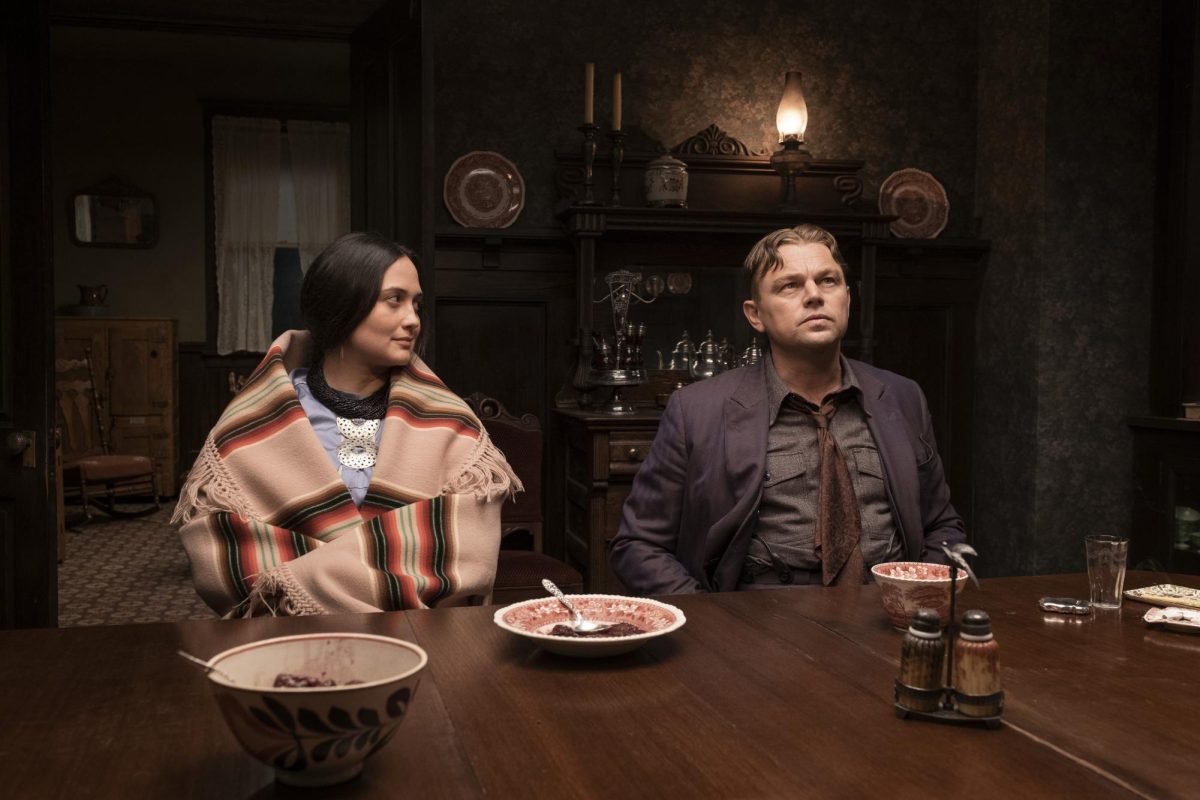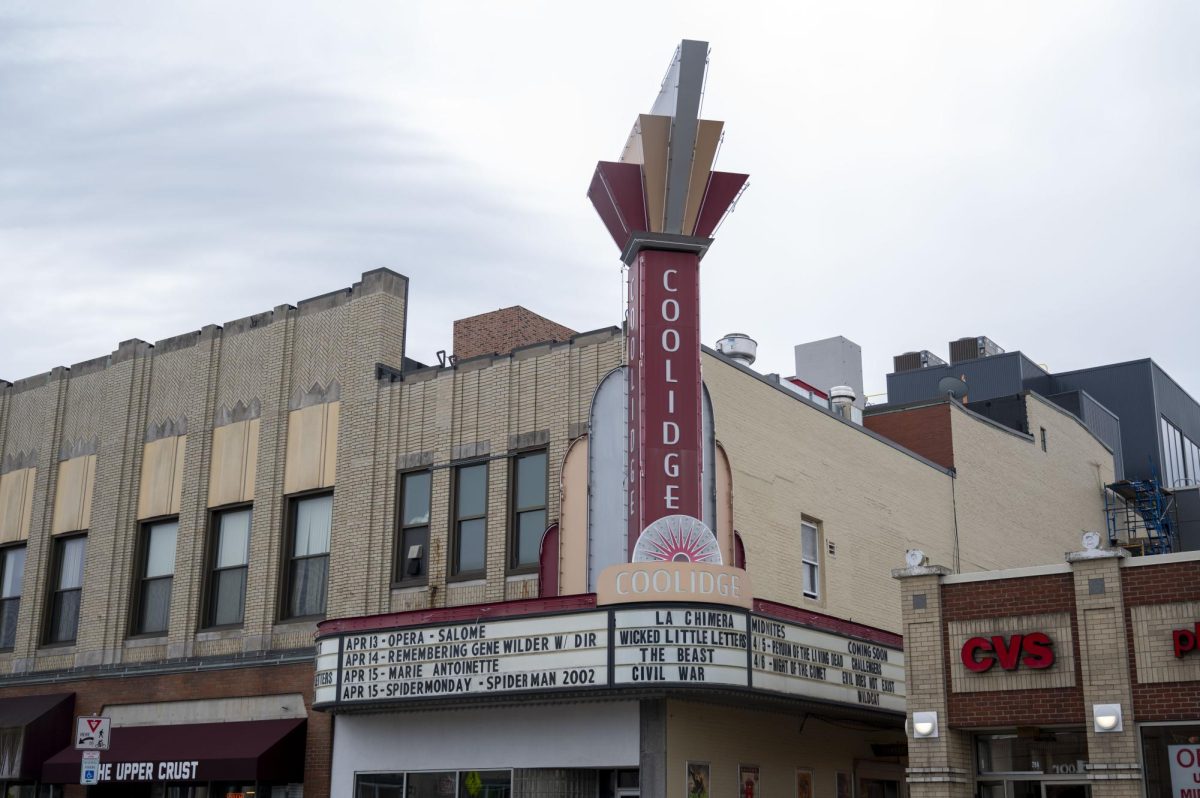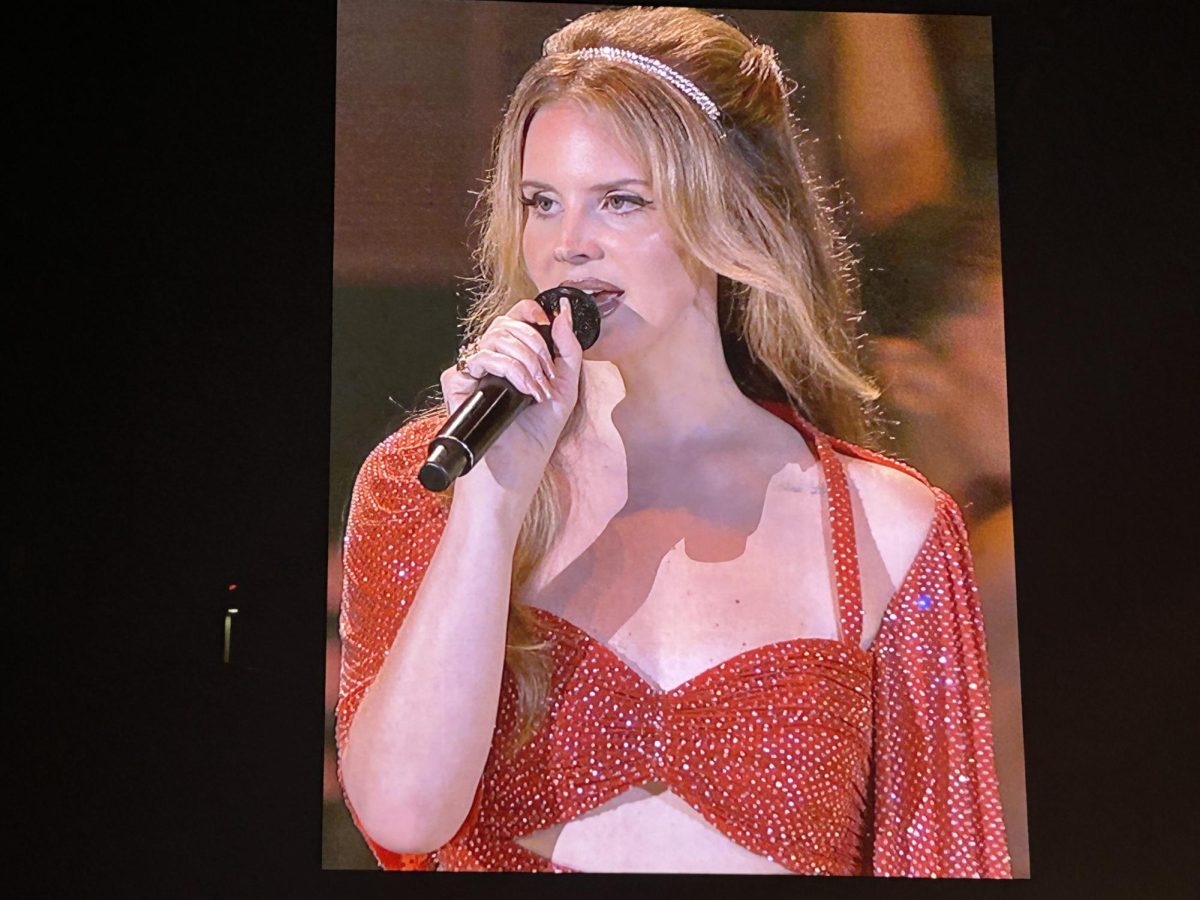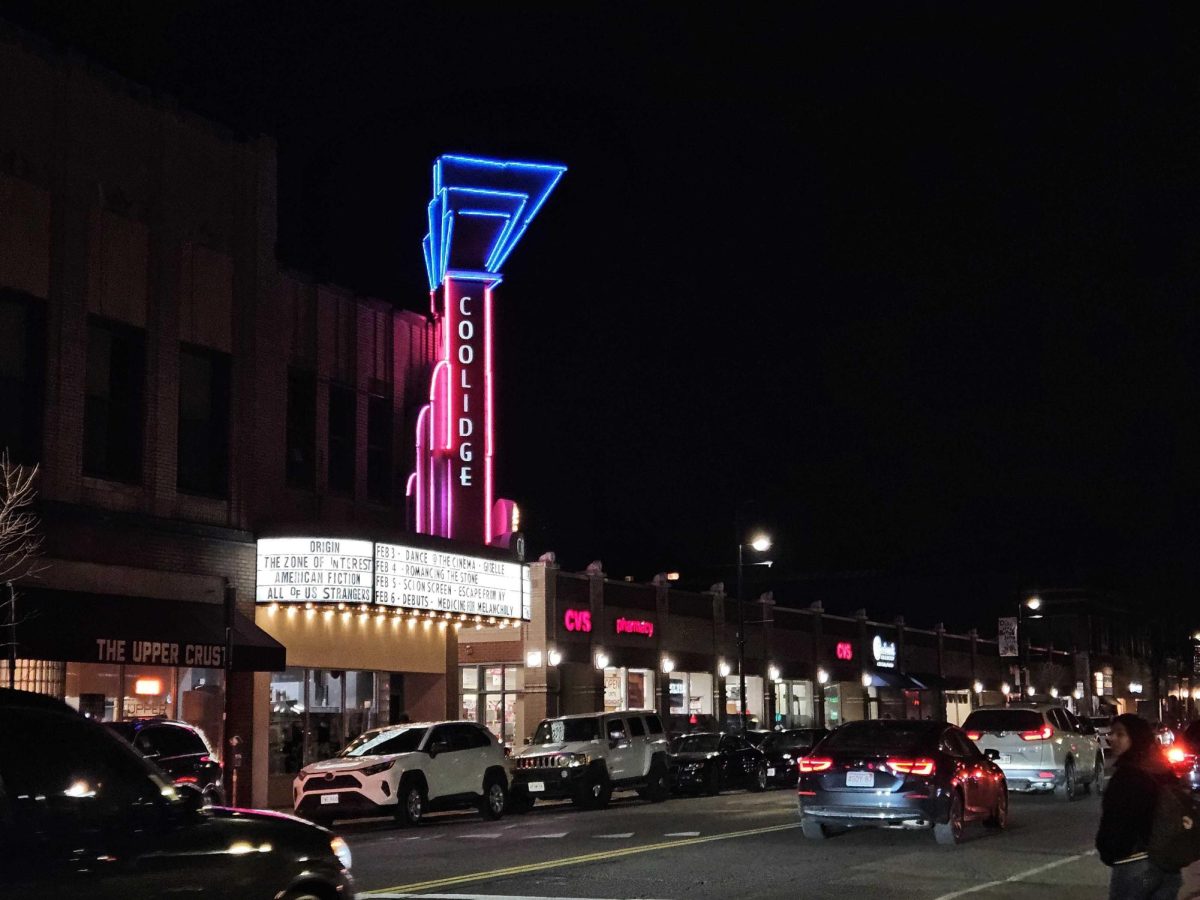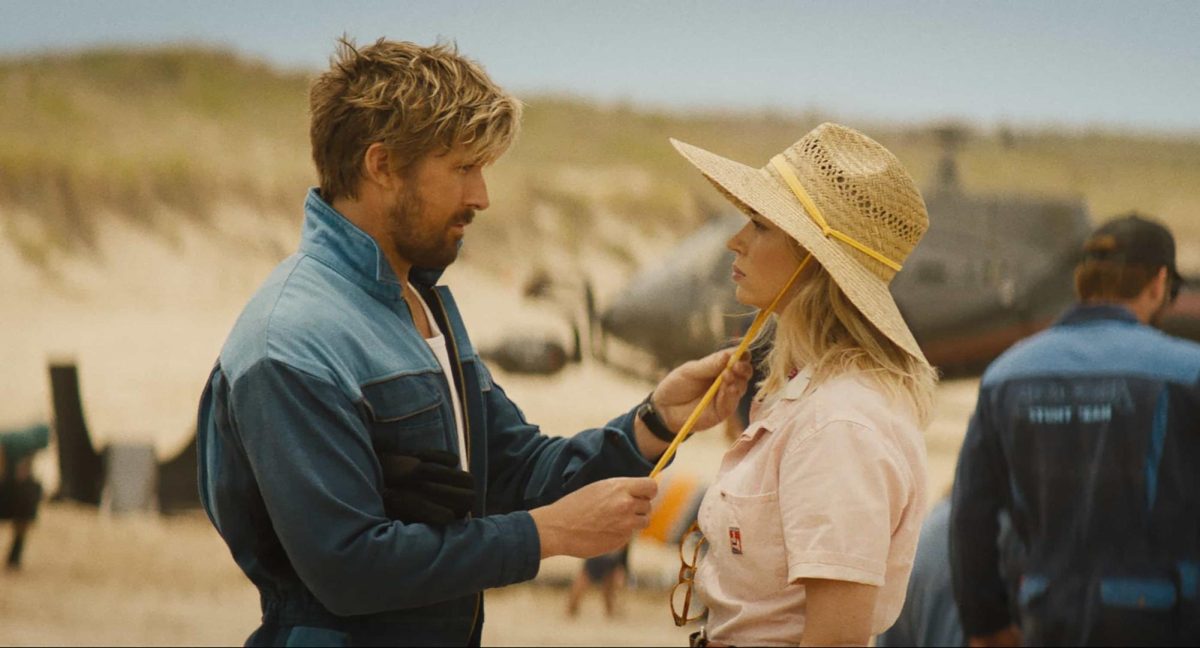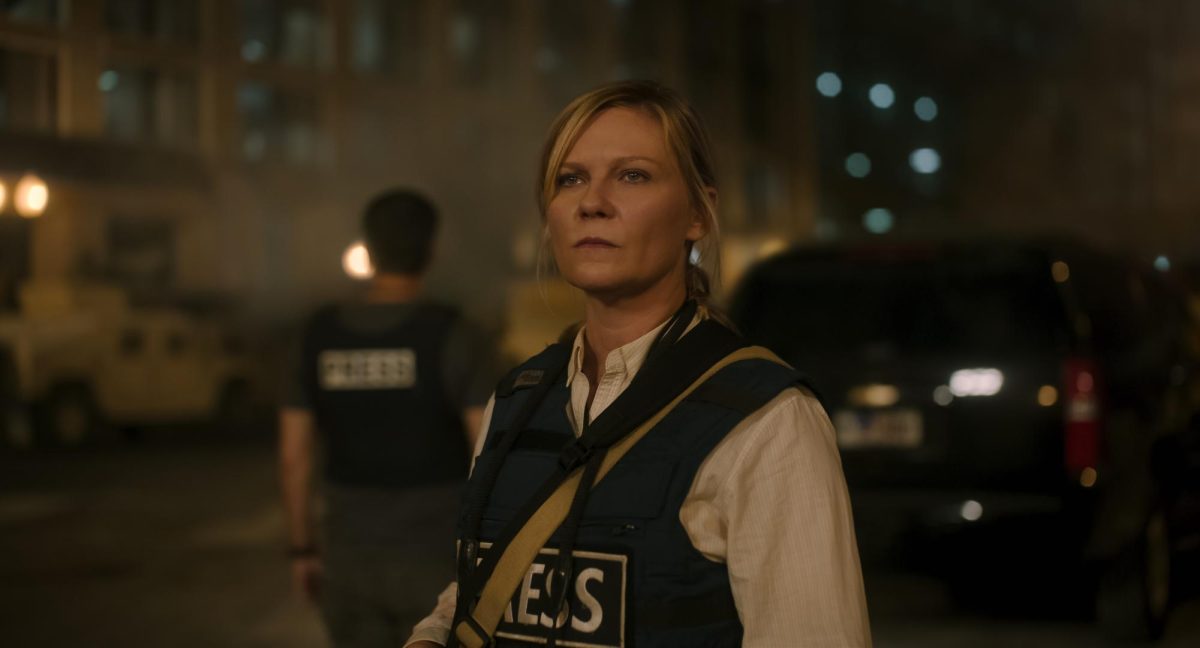With a staggering runtime of three and a half hours, not even Martin Scorcese’s signature quick, creative cuts and sharp camera movements can prevent “Killers of the Flower Moon” from inevitably dragging. Still, outstanding performances and period–accurate touches help honor the film’s lesser–known yet crucial story in American history.
The western drama was released Oct. 20 to critical acclaim and garnered $23 million in its first weekend at the domestic box office, making it Scorcese’s third-best opening in his over 50-year career.
The film takes place in the Osage Nation in Oklahoma right after World War I. Ernest Burkhart (Leonardo DiCaprio) arrives in town to stay with his uncle, William “King” Hale (Robert De Niro), who he soon learns has an ongoing plot to marry into and subsequently kill off each member of a major Osage family for control of its oil money. Ernest then meets and falls in love with Mollie Kyle (Lily Gladstone) of the aforementioned brood, later making her his wife with his uncle’s encouragement. The twisted nature of their lie-saturated relationship provides a small and bloody glimpse into white-Osage relations at the time.
In one of the film’s opening sequences, a group of adolescent boys dance in black-gold rain after discovering oil spurting up from the ground. This scene is likely a reference to the first shot of Paul Thomas Anderson’s “There Will Be Blood,” in which oil prospector Daniel Plainview (Daniel Day-Lewis) silently raises his oil-soaked hand into the camera’s light. In the oil boom sequence, the joy felt by the Osage boys is palpable, compounded by gritty rock music from the late Robbie Robertson — a Canadian musician of Mohawk and Cayuga descent who, before repeatedly collaborating with Scorsese, was the frontman for The Band. The triumphant tone of the opening scene and reference to Anderson’s dark drama foretell the slow, calculated destruction of the Osage Nation by white settlers.
The costume design and mise en scene, or overall look, of “Killers of the Flower Moon” immerses viewers into the world of 1918 Fairfax, Oklahoma, a time and place unfamiliar to many. During their wedding ceremony, Ernest wears a suit while Mollie is dressed in a traditional Osage wedding coat. With the help of wardrobe consultant Julie O’Keefe of the Osage Nation, the costumes authenticate the true story. This, along with the earth-toned composition of the scenes, makes for a country feel to a stellar set.
Gladstone gives a solid performance as Mollie, the soon-to-be lone matriarch of the Kyle family who has headrights to the Osage oil. Even while on her deathbed for the final third of the movie, Gladstone still manages to bring life to her stubborn character.
All of the white men in the movie are infantilized by their incompetence, especially Ernest. DiCaprio does a sound job of playing a cowardly, easily influenced white man — his apparent cluelessness makes it harder to reckon with the depths he goes through to steal money from his wife by knocking out her and her family one by one.
The head white man controlling the town is William, whom everyone, even the Osage people, refers to as “King.” De Niro does a masterful job as the town’s cocky puppet master who has the trust of the Osage, and this is abundantly clear during a delightful scene in which he spanks DiCaprio’s Ernest with a paddle in a dark basement, punishing him for a grave mistake he’s made.
Most of the Osage women are married to the greedy white men of the town due to their power and wealth, which the white men wish to steal. The interracial dating scene in the town is, therefore, systemic, as the Osage people have accrued plenty of cash but still need permission from white townspeople to use it. Reinforcing this is the fact that half-Osage children are called “half-breeds” and other anti-Indigenous slurs. In sum, though the Osage sits on all the capital, both social and economic, the white men in the town still manage to take control of it.
The film ends with the recording of a radio show about the Osage murders. Reminiscent of true crime podcasts today, the radio show emphasizes how these murders were exploited for entertainment, specifically white entertainment, during the early 20th century. Scorcese himself makes an appearance in this final scene, self-deprecatingly pointing to himself as yet another white man profiting from Indigenous suffering.
Stellar performances by Gladstone and De Niro make this film a must-watch for cinephiles and history buffs alike. Although the film probably could’ve been cut to less than three hours, “Killers of the Flower Moon” is a prime and proud addition to Scorsese’s forever-iconic filmography.







